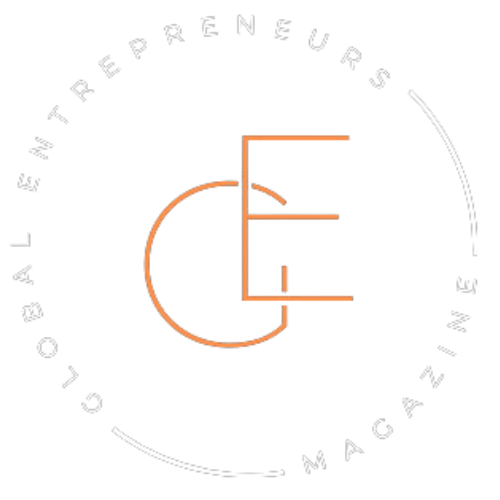She walked into the room with her pitch deck, her numbers, her years of grit packed into a ten-minute presentation. Halfway through, someone interrupted to ask if she had kids — the tone wasn’t curious, it was cautious. Another investor wanted to know how she planned to “handle the pressure.” No one asked about her margins, her growth, or her customer retention.
She left the meeting feeling like she hadn’t pitched a business. She had defended her life choices.
Stories like this don’t go viral. They don’t make headlines or LinkedIn brag posts. But they happen every day — to women building businesses from scratch, often with less funding, less room for error, and more scrutiny.
There’s a gap, and it’s not subtle. It’s a wall. One that women founders are expected to scale without complaint.
But here’s the thing: many of them are climbing it anyway.
The numbers that don’t shock women anymore
Ask any woman founder how much venture capital goes to women, and she’ll probably sigh before answering. Not because she doesn’t know — because she knows all too well.
Last year, women-led startups pulled in less than three percent of all venture funding. That stat floats around like a headline, but for most women in business, it’s not news. It’s background noise. Expected.
What’s jarring isn’t the number itself. It’s what follows.
Because when women do get funded? Their companies often perform better. Studies have shown they generate more revenue per dollar invested and are more capital-efficient. Yet somehow, the gate remains barely cracked open.
It’s not a pipeline issue. It’s not about “finding the right talent.” The talent is out there. It’s been out there. The question isn’t if women are ready — it’s why they’re still being treated like a risk.
Stories of grit that go uncelebrated
Her friends told her to wait. “Get funding first,” they said. “Don’t drain your savings.” But waiting wasn’t an option. So she dipped into what she had, maxed out one credit card, then another. She packaged orders from her kitchen table, fielded customer emails between daycare pickups, and ran Facebook ads late at night because that was the only time she had.
That business now ships nationwide.
Another woman launched a tech startup after being told — repeatedly — that she needed a male co-founder to be taken seriously. She didn’t listen. Instead, she learned to anticipate the doubt in investor meetings and answer it before it showed up. It took 37 rejections to land a single check. That check changed everything.
There’s a version of entrepreneurship we glamorize: polished decks, fast rounds, press features. And then there’s this version — the one women know intimately. It’s scrappy, personal, exhausting, and often invisible. But it’s working.
Quietly. Relentlessly.
The quiet shift happening beneath the surface

She didn’t wait for a yes from a VC firm. She texted five friends, pitched them over coffee, and pulled together a micro-round from people who believed in her before the market did. One of them was another woman founder who remembered exactly how it felt to start with nothing but a good idea and too much grit.
That’s the shift happening now. It’s not loud. It’s not flashy. But it’s spreading.
Women are forming their own investor circles. They’re pooling funds, backing each other, rewriting the rules that once shut them out. There are funds today run by women who were once passed over — and they’re writing checks with their receipts in hand.
This isn’t about waiting to be picked anymore. It’s about building tables when none were offered.
There’s no parade. No headline ticker. But ask around — the momentum is real, and it’s picking up speed.
Why standard VC pitching often fails women
She walked in with traction, a clear roadmap, and a product that was already making money. Still, the questions came sharp and skeptical. “What happens if this doesn’t scale?” “Are you ready to handle serious growth?”
Meanwhile, her male counterpart pitched an app still in beta and got praised for his “vision.”
It’s not about confidence. It’s about how confidence is received.
Women are often grilled on risks while men are celebrated for ambition. Investors ask men how big they can grow — they ask women how they’ll survive. Same room, same opportunity, different temperature.
Founders know this pattern. It shapes how they prepare, how they speak, how they carry themselves. Some even rehearse a lower tone of voice to sound “serious.” Others bring male team members just to make the room feel safer — for the investors.
But the playbook wasn’t written with women in mind. So they’re writing new ones.
Changing the narrative, one win at a time
There was a time when women waited to be invited — into meetings, onto panels, into funding rounds. That time is fading. Slowly, but surely.
Now you’ll find women launching funds, mentoring younger founders, sharing the ugly parts of their journey out loud. They’re showing up without filters. They’re talking about the rejections, the doubt, the times they almost quit — and why they didn’t.
That kind of honesty is powerful. Not because it’s inspiring, but because it makes space for others to try.
The next generation is watching. They’re not waiting for validation. They’re building businesses on their own terms, using new tools, leaning on communities that weren’t available a decade ago.
Every time a woman breaks through, it quietly shifts what’s possible for the one coming up behind her. That’s how the story gets rewritten — not all at once, but win by win.
What needs to be amplified
She didn’t just build a business — she built a path others could walk.
That’s what more people need to see. Not just the success stories once they’re polished and press-ready, but the messy middle. The doubts. The small wins. The inbox full of rejections followed by the one email that changed it all.
Too often, women downplay what they’ve done. They call it luck. They brush off the struggle. But sharing the real story — the whole story — is part of what opens the door for someone else.
This isn’t about optimism. It’s about visibility.
Because the odds haven’t shifted much. But the strategies have. The support systems are growing. The silence is breaking. And women aren’t just finding ways around the funding wall — they’re building ladders for others while they climb.




